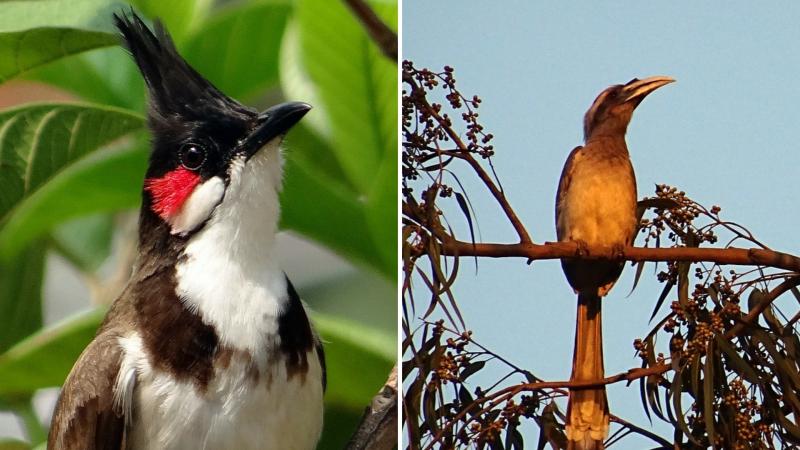
A fruit—packed with nutrients and rich in energy—is the result of toil for a plant. Instead, could it not just produce more leaves that make its food? Well, from a plant's perspective, it's what's inside the fruit that makes it worth the effort—the seed—which bears its future generations. Fruits act as tasty treats for animals and birds to help disperse the seeds far and wide, where they can flourish.
However, can't the plants disperse the seeds themselves? In the lush tropical forests, if a plant were to drop its seed, chances of it growing are bleak, with little sunlight penetrating the canopy and strife for nutrients, the seed won't germinate. Hence plants invest energy in making fruits to draw birds and animals that can disperse its seeds far and wide.
"More than 75% of plants in tropical forests are dependent on animals for seed dispersal", says Dr Rohit Naniwadekar, Scientist at the Nature Conservation Foundation, Mysuru. "Seed dispersal is a mutualistic relationship where the plant benefits through the dispersal of seeds to favourable sites for germination and animal benefits because of the nutrition it derives from the fruit pulp", he explains about this tie-up.
In a recent study, Dr Naniwadekar and his colleagues have explored organisation of plants and fruit-eating bird communities of the Pakke Tiger Reserve in Arunachal Pradesh. They have observed 43 plant species and 48 bird species in the region, and have identified the different networks formed between the trees and their avian seed dispersers. The findings of the study, which was partly funded by the Department of Science and Technology, have been published in the Journal of Animal Ecology.
Fruit-eating birds, or frugivores, vary in their appearance and numbers. In this study, the researchers observed small birds like bulbuls, and larger ones like hornbills, which eat a variety of fruits from different trees. As the size of the birds varies, the size of fruits they eat also differ. Hence, the researchers not only observed which bird was eating what fruit but also how they were eating it.
"If the frugivore drops the fruit/seed under the parent plant, it doesn't help the seed in escaping from the risks of predation and competition under the parent plant", says Dr Naniwadekar. The birds need to swallow or carry the seeds far away to help them thrive. On the other hand, if the seed is larger than the bird's mouth, it merely pecks at the fruit and does not disperse the seeds. "In such scenarios, plants do not benefit. However, large birds have large mouths and can swallow the fruits and disperse the seeds without damaging them. Therefore, it is important to study the fruit handling techniques and gape sizes of frugivores", he explains.
After a mammoth 2065 hours of observing birds and the fruits they eat, the researchers found that networks were formed between the frugivores and plants. For example, large frugivores like the hornbills, although did not play a central role in such systems, had trees with bigger fruits entirely dependent on them for dispersal. Medium-sized birds, like barbets and bulbuls, ate fruits from most plants and played a central role.
However, the researchers found a qualitative difference between medium-sized and larger frugivores. Hornbills and imperial pigeons dropped a smaller proportion of fruits than other smaller birds, increasing the probability of successful seed dispersal. These large birds also fly over greater distances, carrying the seeds in their guts before dispersing.
The study gives us a sneak peek into the intricate network of birds and plants, which has evolved over thousands of years, resulting in a mutually beneficial relationship. Alas, it is not without threats. "Large frugivores are often vulnerable to anthropogenic pressures like hunting and habitat fragmentation," remarks Dr Naniwadekar.
In an earlier study, Dr Naniwadekar had highlighted the possibility of the hornbills going extinct in northeast India, impacting plants with large fruits. "Loss of frugivores, therefore, can have cascading effects on communities as is also highlighted in this study. Even frugivores like barbets and bulbuls that feed on fruits of a diverse array of species are crucial. Their loss can have cascading effects on plant species and other frugivores in the long run, "he warns.
This article has been run past the researchers, whose work is covered, to ensure accuracy.
